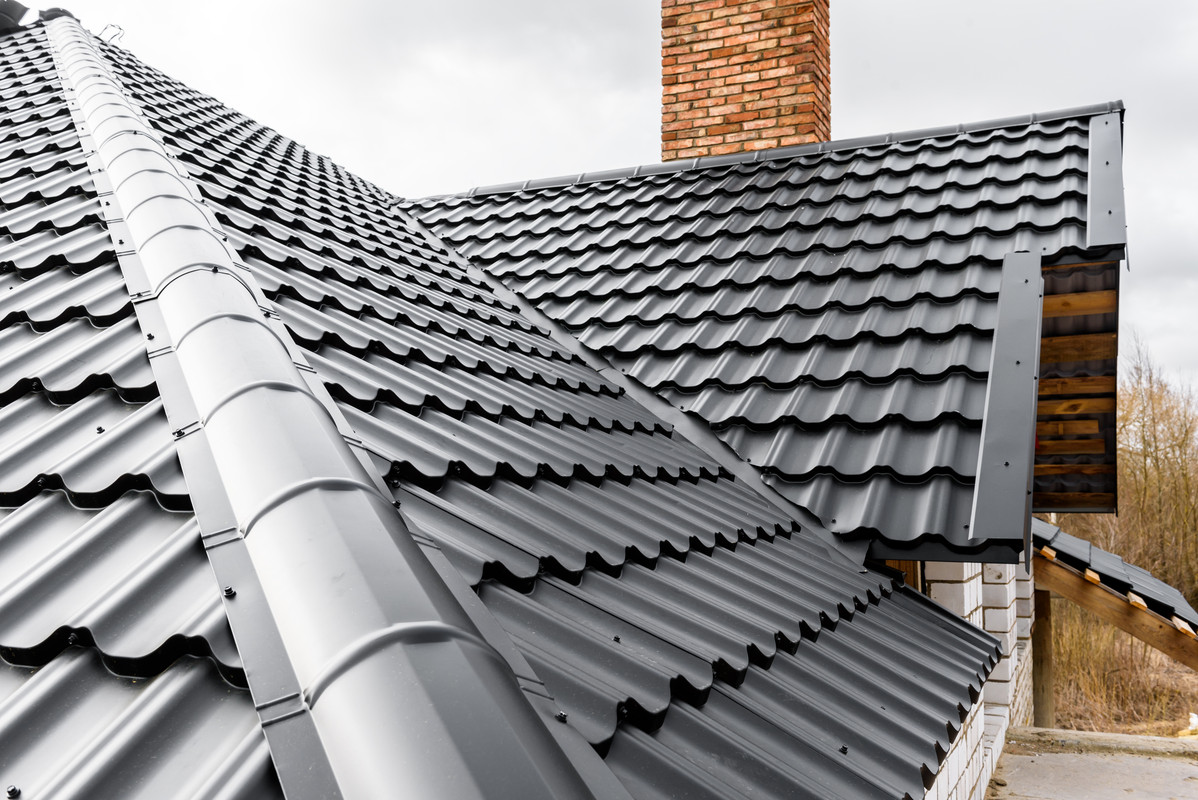A Step-By-Step Guide To Roofing Installation
by siteadmin

Before starting roofing installation, make sure you have the right supplies. You should have roofing caulk, underlayment, and a tarp on hand. These are the most important roofing installation materials. Listed below are the basic materials you need. If you're not familiar with them, read on to learn how to use them. Here's a step-by-step guide to roofing installation. It'll help you avoid a mess and ensure a professional-quality job.
Underlayment
Choosing the right type of underlayment for your roofing installation is vitally important. The right material will protect the underlying structure of the roof and keep it dry. However, some underlayments are better than others. The roofing service you hire should use the best underlayment possible because if they don't, you'll risk damaging the roof and possibly your home as a result. Here are a few things to consider when choosing the right underlayment:
A high-quality rubberized asphalt underlayment will prevent water from seeping under the roof and keep the roof dry. The material is highly durable and waterproof and is easy to install. It will help prevent ice dams, but it is not as effective in a low-temperature environment. It is also heavier than asphalt-saturated felt and may peel back over time. Choosing the best underlayment for your roofing installation is important, as it will increase the lifespan of your roof.
The size of your underlayment depends on the shape of the roof. An unusual shape will result in more waste, so be sure to measure your roof before ordering. Roofing companies can provide you with the appropriate amount and shape of material for the total square footage of your roofing project. Likewise, you can get underlayment for end laps from them. They'll also help you with the calculations. They'll also provide you with any necessary material for end laps.
You can also buy synthetic underlayment from any metal roof manufacturer. Most metal roof suppliers sell synthetic underlayment, but you can find it in big box stores as well. This type of underlayment is usually more expensive per roll, but you can get it at a lower price by buying a larger quantity than you need. Synthetic underlayment can be purchased at the manufacturer of the metal shingles. If you choose to purchase synthetic underlayment, it will be rolled into the installation quote.
Asphalt-saturated felt is not fully waterproof, but it's water-resistant. However, in hot climates, the material will degrade faster than felt. In these climates, it's better to choose rubberized asphalt, as it can withstand more moisture without fading. Asphalt-saturated felt is generally used on steep sloped roofs, but in flat areas, you'll want to choose a waterproof option.
Self-stick underlayment is easy to use and is easier to install if two people do the job. You should lay out about 12 feet of self-stick underlayment and align it with your chalk line. When the felt paper is fully in place, it's important not to cut off the edges. During the final stages of the roofing installation, you can repeat the procedure. You will need to repeat this process until you've covered your entire roof.
Choosing an underlayment for your roofing installation is important, as felt is more likely to tear and rip than synthetic underlayment. If you live in a humid or wet climate, choose synthetic underlayment. The latter is cheaper than felt but doesn't offer as much water protection as the former. A good choice for your roofing installation will depend on the climate and the type of underlayment you choose. Once you've chosen an underlayment, it's time to install your shingles!
If you choose self-stick underlayment, make sure you lay it down flat before nailing it on. If you don't have time to lay down the underlayment yourself, you can use a self-stick underlayment that comes with a plastic backing. If it's a warm day, the underlayment will stick to the decking without fasteners. Then, peel off the lower half of the plastic backing before nailing it in place.
Another type of underlayment for roofing installation is made of felt. This material is water-resistant, but a poor-quality underlayment can absorb water and warp the roof deck. It may also lose its volatile compounds over time. A poorly installed underlayment may cause the roof to warp, and exposure to extreme heat and UV light will diminish its effectiveness. If you don't have time to make sure you choose the right type of underlayment, you should hire a professional roofing contractor to handle the project for you.
Underlayment is as important as the material you choose for your roof. Metal roofing is one of the most popular types of roofs in the country, and it is important to choose the right underlayment for your project. Underlayment works as an extra layer of protection for the metal roof. A well-fitting underlayment will prevent moisture from penetrating the metal and causing it to become weakened and rusted.
Roofing Caulk
When looking for a good roofing caulk, make sure to choose a reliable brand with a proven track record. Durability and reliability go hand in hand, but there are a few other important factors to consider when buying a product. Buying a product that's popular and growing can be an excellent sign. This means that the manufacturer is likely to be able to improve the quality of the product and offer improved service after it is purchased. Always remember that price does not always reflect quality. If a product is cheap, it probably isn't worth the money. Likewise, an expensive product with no real value is not worth the money.
A good roofing caulk can last up to 10 years if used properly, but if you don't plan to keep the property for a long time, you should look for a product with a longer lifespan. If you're looking for an inexpensive, long-lasting option, consider buying a sealant (which comes with four caulking tubes). On the other hand, there is a liquid rubber sealant that comes in a can and is sprayable. It's important to choose a product that has a good bond with masonry, asphalt, and metal roofing materials before applying it.
Using a good quality roofing caulk is important because the weather can put a strain on the material. Using the right type of caulk will make the job much easier, and will provide the waterproofing properties that you need. The most effective type is urethane, which is more durable than acrylic or silicone, and will also last longer. You'll be much more satisfied with the outcome of your project when you're using silicone caulk instead of acrylic or rubber caulk.
Sealants are another important consideration. While a caulk is made of latex and acrylic materials, a true sealant will have a polymer that allows it to expand and contract. The latter type is ideal if you live in an area with frequent weather changes and high moisture levels. Despite the differences, caulks are generally much more expensive. And while some companies use both types, it's best to use the one that works best for you.
A high-quality roofing sealant will prevent leaks and provide the necessary protection against the weather. Sealants are more expensive than caulk, but they are often recommended by professionals. And while they're cheaper and easy to use, you need to pay attention to the specifications for the material you're using. Roofing caulk is usually a DIY product, but sealants will provide the proper specifications for your roofing material.
Roofing caulk is an important part of roof installation and maintenance. It keeps flashings sealed and secures tile and drip guards. While some caulk products are difficult to apply properly, they still provide excellent protection. So it's essential to choose the right kind and make sure it's waterproof. While buying caulk, make sure you find one that's attractive and will fit your needs. You'll be pleased with the results.
You must consider the temperature and moisture level of your roofing project when choosing a caulk or sealant. Some common types have unique properties. For example, silicone sealants bond to most materials, which makes them ideal for wet exterior applications. These silicones contain antimicrobial properties to prevent mold and mildew from growing. They're also UV-resistant, so they last longer in direct sunlight. It's important to choose a caulk that can handle the widest range of temperatures.
There are many types of roofing caulk, including butyl, acrylic-latex, and silicone. However, when choosing one, make sure to follow the guidelines and instructions to the letter. A silicone-based caulk, for example, has low-moisture resistance. However, a latex-based one will offer moderate water resistance. This caulk may take up to 72 hours to reach full cure. If you have a tile roof, consider purchasing a product that has an advanced mildewcide.
CATEGORY: ROOFING
TAGS: roof repair, roofing company, roofing contractor, roofing maintenance, roofing services
Before starting roofing installation, make sure you have the right supplies. You should have roofing caulk, underlayment, and a tarp on hand. These are the most important roofing installation materials. Listed below are the basic materials you need. If you're not familiar with them, read on to learn how to use them. Here's a step-by-step…
Recent Posts
- Roofing Company Savannah Sheds Light on the Lifespan of Roofs: How Long Should a Roof Last?
- Choosing the Best Gutters for Your Jacksonville FL Home
- Choosing the Best Gutters for Your Chicago Home
- Exploring the Drawbacks of Duct Cleaning: Insights from Air Vent Cleaning Charlotte
- Sons of Monaco Painting Unveils the Ultimate Solution: Roll vs. Spray for Exterior Paint
